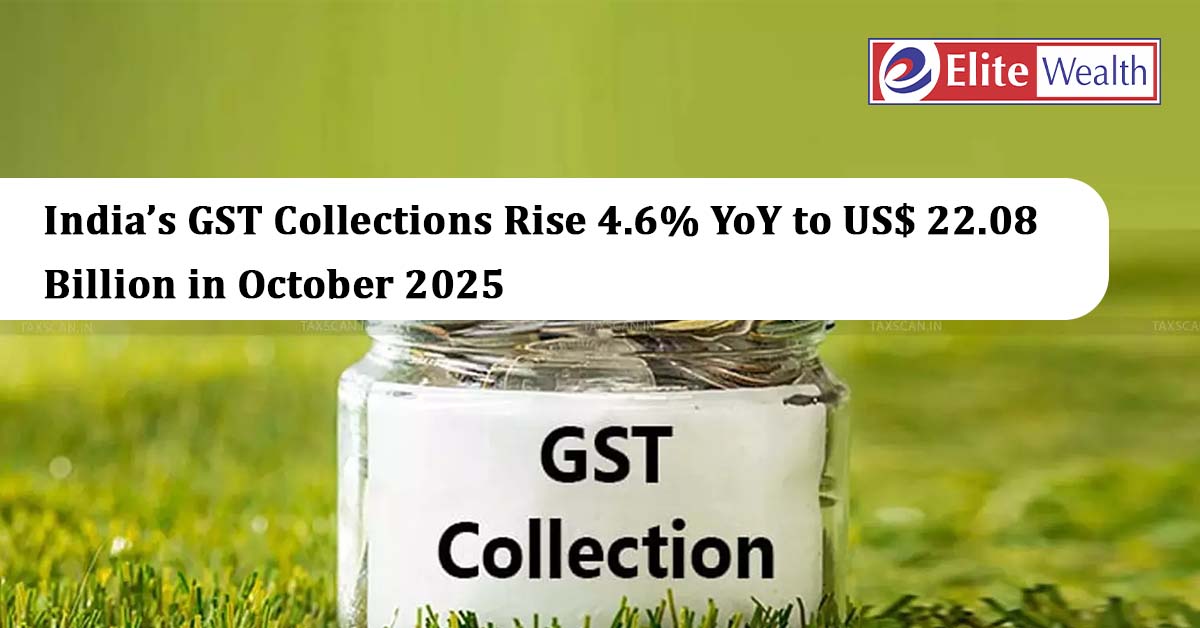
India’s gross Goods and Services Tax (GST) collections rose 4.6% year-on-year to ₹1,96,000 crore (US$ 22.08 billion) in October 2025, supported by strong festive season demand, pent-up consumption, and recent GST rate cuts across key consumer segments.
Despite rate reductions on 375 items, including essential goods, electronics, and automobiles, revenue performance remained robust. The surge was attributed to heightened purchases during the Navratri-to-Diwali period, as consumers advanced spending following Prime Minister Mr. Narendra Modi’s Independence Day announcement on GST relief measures.
Month-on-Month Improvement
October’s GST mop-up outpaced the previous months’ collections —
- ₹1,87,000 crore (US$ 21.07 billion) in October 2024
- ₹1,86,000 crore (US$ 20.95 billion) in August 2025
- ₹1,89,000 crore (US$ 21.29 billion) in September 2025
The steady upward trend indicates a sustained rebound in consumption and the effectiveness of tax rationalisation measures.
Breakdown of Collections
- Domestic GST revenue: ₹1,45,000 crore (US$ 16.33 billion), up 2% YoY
- Import-related revenue: ₹50,884 crore (US$ 5.73 billion), up 13% YoY
- Refunds issued: ₹26,934 crore (US$ 3.03 billion), up 39.6% YoY
- Net GST revenue: ₹1,69,000 crore (US$ 19.04 billion), showing a marginal 0.2% increase YoY
Economic Implications
While the growth rate moderated from the 9% average seen earlier in FY26, analysts note that the latest data reflects resilient consumer spending and steady tax buoyancy despite lower tax rates.
Economists expect GST collections to remain strong through Q3 FY26, supported by festive consumption, improved manufacturing output, and a rebound in discretionary spending.
The October 2025 GST performance underscores India’s fiscal stability and the broader success of rate rationalisation, which has managed to sustain revenue momentum while easing the burden on consumers.
Disclaimer:
This article is intended solely for educational and informational purposes. The securities or companies mentioned are provided as examples and should not be considered as recommendations. Nothing contained herein constitutes personal financial advice or investment recommendations. Readers are advised to conduct their own research and consult a qualified financial advisor before making any investment decisions.
Investments in securities markets are subject to market risks. Please read all related documents carefully before investing.
